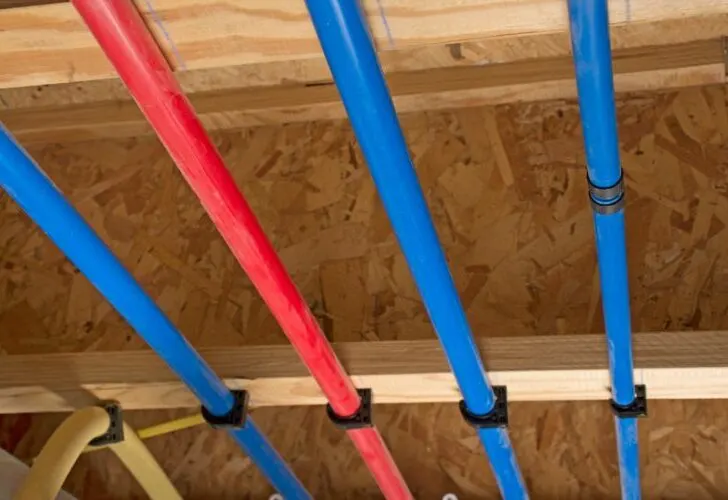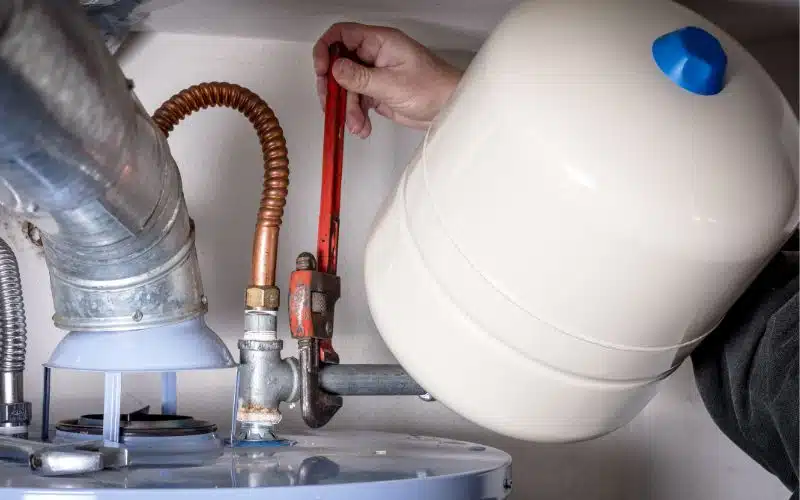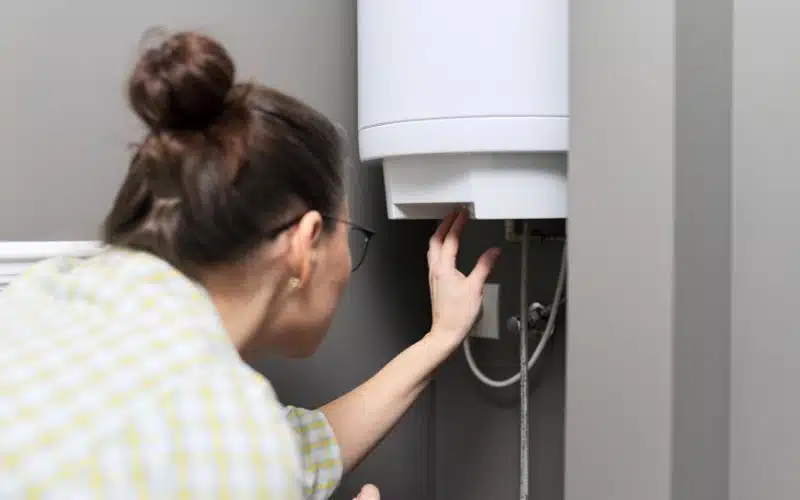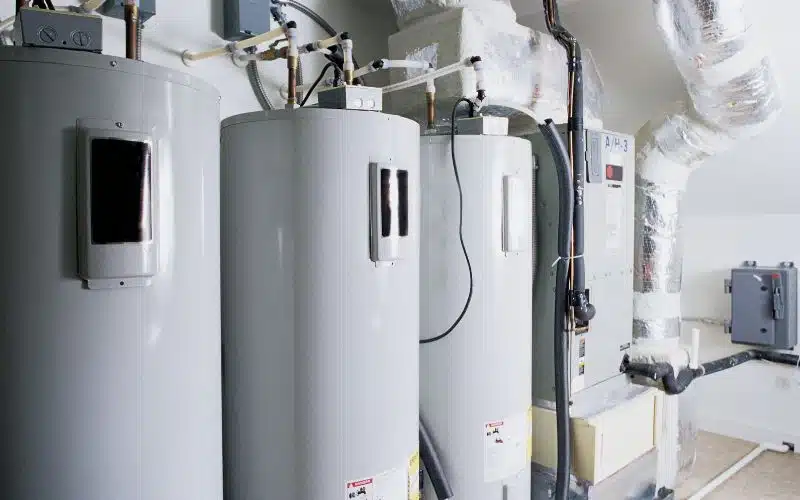Pex pipes are reliable in keeping water flowing during cold and hot temperatures. The pipes can adjust to any weather by contracting and expanding.
They can increase to three times their standard size to adjust to the temperature change. It is a feature that makes PEX pipes a good building plumbing material.
However, these qualities do not mean your PEX pipe won’t break under extreme temperatures. The water inside the pipes will freeze if the weather gets too cold.
Likewise, if it gets too hot for more than 30 days, the pipes become weak and break under pressure. Therefore you need to insulate your pipes to protect them from bursting or cracking.
You need to use foam insulation to insulate your PEX pipes. Pex pipes are flexible, and foam is the only insulation that won’t damage the pipes. You must use the correct insulation size and seal the seam completely.
How to Insulate Pex Pipe: (Step by Step)?

PEX pipes are pretty flexible, unlike other rigid pipes. Therefore, PEX pipes are prone to shallow temperatures and likely to crack and burst.
Insulating PEX pipes is a preventive measure to control the crack in case the temperature is too low.
An insulator that can preserve the pipes is essential in the process. Here are the steps for insulating PEX pipes.
- Wipe the surface of the PEX pipe with a clean cloth to remove dirt and water.
- Clean the insulation with a neat, wet cloth.
- Slit a length of insulating material and use it to cover the pipe. You should make sure that the insulator aligns with the pipes.
- Shove the insulation into the pipe to its correct position.
- Rotate the insulation material till the slit is facing towards you. You should make sure that the slit insulator is easily accessible.
- Remove the protective adhesive tape to expose the inside of the insulation seam.
- Seal the insulation by pushing both sides of the seam together.
- Install another piece of insulation with the same method.
- Cut the length of the new piece of insulation with an insulation knife.
- Use a lid brush to apply some contact cement on the two ends of the insulation.
- Seal both ends of the insulation together with the contact cement. If necessary, leave a two-inch gap between the ends of both insulations.
- Hold the ends of both pieces for about 30 minutes to allow the cement to bond together tightly.
- Continue these steps until you completely insulate the PEX pipes.
Is It Worth It to Insulate Pex Piping?
It is worth insulating your PEX pipes. It is essential to insulate PEX pipes as they can freeze and crack in low temperatures.
Without insulation, PEX pipes crack when temperatures below 20 degrees Fahrenheit.
Insulation protects the pipes from cracking and bursting by reducing the accumulation of moisture and condensation.
In addition, PEX pipe insulation can also enhance energy efficiency. It can protect your pipes from the effects of extreme cold weather and ultraviolet rays of sunlight.
Also, insulation helps in increasing the longevity of your PEX pipes. It gives the pipe space to expand and contract when there is power loss or the water temperature changes.
Furthermore, PEX pipe insulation reduces the chances of water accumulating in your basements and attic. Therefore, keeping your water hot saves you the cost spent on energy bills during cold weather.
In addition, with PEX pipe insulation, water can stay up to four degrees Fahrenheit warmer during cold weather. Therefore, you do not need to spend so much time and money heating water.
However, PEX pipes freeze like other types of pipe materials if the temperature drops below 20 degrees Fahrenheit.
However, the PEX pipe expands instead of breaking when the water inside is frozen. Therefore, it is easier to warm water inside the PEX pipe, unlike other pipe materials.
Here are different pipe materials and their temperature threshold.
| Material | Temperature (Degrees Fahrenheit) |
|---|---|
| PEX | 200 |
| Iron | 2570 |
| CPVC | 200 |
| Copper | 1981 |
| PVC plastic | 140 |
| Galvanized steel | 392 |
What Kind of Insulation Do You Use for Pex?
Foam insulation is the best for PEX pipes because it is flexible like the pipe material. Foam insulation works well with PEX pipes’ flexibility and doesn’t damage the tubing when pushing it in.
It is essential to clean your foam insulation with a wet cloth before using it on your pipes. It would increase the foam flexibility and make it easier to bend.
Furthermore, it is essential to use copper-sized foam insulation for PEX pipes. Foam insulations for copper fit snugly with your pipes.
However, IPS-sized foam insulation would work perfectly for PEX pipes. However, the size won’t fit perfectly like the copper size.
You can get these copper sized in house equipment stores. You should always ensure to use insulation tape to seal foam insulation completely.
How Do You Insulate Pex Pipe in a Basement?
You do not need to insulate the PEX pipes in your basement if they run inside the basement walls.
Although it is best to insulate them so that it would reduce the amount of heat your pipe draws from the surrounding during cold weather.
It would also prevent the pipes from releasing heat into the surrounding area during hot weather.
Additionally, it would be best if you insulated both the cold and hot water PEX pipes in the basement to balance the effect of the temperature change on both.
Insulating hot water pipes slows down the cooling of pipes during cold weather. Likewise, insulating cold water pipes cause the pipes to condense during heat and keeps the basement damp and cool.
You can run the pipes close to the basement roof to allow heat from the house into them. In addition, it would reduce the chances of your PEX pipes freezing.
The basement is uninsulated, and pipes running through it are more likely to freeze faster if not properly insulated.
Also, if the pipes in your basement burst due to low temperature, it can weaken the house’s foundation.
How Do You Insulate Pex Pipe in the Attic?
It would be best if you insulated the PEX pipe in the attic with foam insulation. You should ensure that the pipe gets heat from the ceiling to keep it warm.
Therefore you need to run close to the ceiling. You can also run the pipe under the attic insulation to increase the heat within the pipe.
You should ensure to completely cover the insulation because being in the attic increases the pipe’s exposure.
In addition, you should use lesser fitting for insulating PEX pipe in the attic. Fittings are not resistant to cold weather, and they would make your pipes burst quickly.
Insulated PEX pipes in the attic protect the ground below and the drywall from water damage.
Cold water flowing through your pipes can attract warm air, which condenses the water and causes it to drop to the floor and wall.
Insulated pipes in the attic can prevent the water from dripping down from the attic. It is vital to insulate PEX pipes in the attic for places with freezing temperatures.
You do not want the pipes bursting and dripping water from the ceiling. It could damage the entire roof structure.
How Do You Insulate Pex Pipes From Freezing?
Pex pipes are flexible and best for withstanding temperature changes. However, they also freeze during freezing temperatures.
It is not common for PEX pipes to burst like other pipe materials. Cold temperature below 20 degrees Fahrenheit freezes the water inside PEX pipes, but it does not cause the pipe to burst.
It would help if you insulated your pipes against freezing to protect them. Here are the necessary steps you should take once you notice the weather is dropping to freezing point.
#1. PEX Hose
You should disconnect your PEX hose if the piping system is not permanent. It would prevent the water from freezing as the temperature drops. Keep the hose indoors in a warm place where it won’t freeze.
#2. Water Monitor
You need to install a water monitor to know if your pipes are leaking or freezing. It also records how much water you use to adjust according to the water supply level.
#3. Freeze Proof Silcock
Anti-siphon freeze-proof Silcock helps protect your pipes from freezing. It regulates how water flows through your pipes and keeps them running during cold weather. You need to install them at a water inlet spot to work effectively.
#4. Water Drain
You must drain all the water in your plumbing system by turning off the main line and opening all the taps to let the water out. Such action would help prevent the water in your pipes from freezing.
You must do this if your building is unheated or if nobody will be occupying it for a while.
#5. Keep the Water Flowing
Turn on an indoor tap and let the water flow for hours. It would prevent the water inside the pipe from freezing. It is best to do this with a drainage system tap so you do not flood your home.
#6. Insulate Building
It would be best to insulate your home and PEX pipes to prevent them from freezing. In addition, you must insulate cold areas like the basement, attic, and garage.
Such areas are more prone to freezing. It would help if you covered the air vents to conserve the heat inside the building. Keep the doors of your garage closed to keep the heat inside.
In addition, you should open the PEX pipes in your kitchen cabinets and bathroom area.
During installation, protect your pet pipes from excessive sunlight so they do not become weak. If your pipes are weak, they will break when it is freezing.
#7. Temperature
You should ensure your thermostat is above 55 degrees Fahrenheit throughout the period the temperature outside is below 20 degrees Fahrenheit. It would keep the pipes inside the house warm and running.
Conclusion
It is essential to insulate your PEX pipes so that you do not have a problem with water supply during extreme weather conditions ( especially freezing).
However, you should ensure that they are insulated before the temperature drops because it won’t be easy to insulate them when it is freezing.





